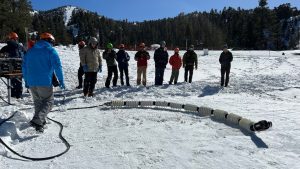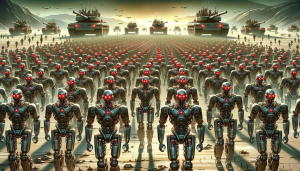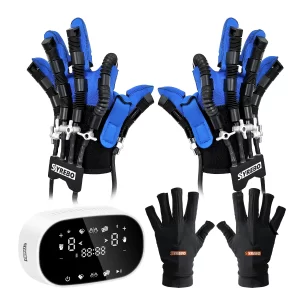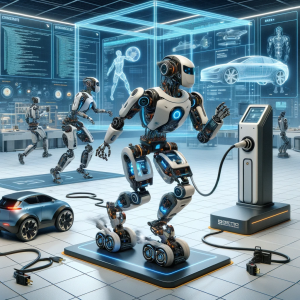The History of Robots: From Early beginnings to Modern Applications
Robots in the 19th century were used primarily for manufacturing and industrial purposes. They were large, bulky machines that were not very maneuverable. However, they were able to perform repetitive tasks quickly and accurately. This made them ideal for jobs such as welding, fabricating and assembling parts. Some of the first robots were created by Isaac Asimov and Karel Capek. Asimov’s robots were used in his stories to explore the ethical implications of artificial intelligence, while Capek’s were primarily used for entertainment purposes.

Robots in the 19th century were used primarily for manufacturing and industrial purposes. They were large, bulky machines that were not very maneuverable. However, they were able to perform repetitive tasks quickly and accurately. This made them ideal for jobs such as welding, fabricating and assembling parts. Some of the first robots were created by Isaac Asimov and Karel Capek. Asimov’s robots were used in his stories to explore the ethical implications of artificial intelligence, while Capek’s were primarily used for entertainment purposes.
Today, robots are used in a variety of settings, including manufacturing, healthcare, research and even construction. They have become smaller, more agile and more capable of performing complex tasks. As the technology continues to evolve, it is likely that robots will play an even greater role in our lives.
Robots have been a part of human history for centuries, playing various roles in both myth and reality. The word “robot” itself comes from the Czech word “robota,” meaning forced labor or drudgery. In 1921, Karel Capek’s play R.U.R. popularized the term and introduced the idea of robots as intelligent, self-aware beings. However, it was not until the late 20th century that robots began to play a significant role in our lives.
Early robots were large and clumsy, often used for simple tasks such as welding or fabricating parts. However, as technology progressed, so did the sophistication of robots. By the 21st century, robots were becoming increasingly smaller, more intelligent and more versatile. They are now used in a variety of settings, from manufacturing to healthcare to warfare.
While robots have long been a staple of science fiction, they are quickly becoming a reality. As we continue to develop new technologies, it is likely that robots will play an even larger role in our lives.
Robots are machines that can be programmed to carry out a variety of tasks. They have been used in manufacturing for many years, but recent advances in technology have led to the development of smaller, more intelligent and more versatile robots that are now being used in a wide range of industries, including healthcare and warfare.
The word “robot” was first used in a Czech play called R.U.R (Rossum’s Universal Robots), which was written by Karel Capek in 1920. The play tells the story of a group of robots that rebel against their human creators and end up destroying them.
The first robot was created by Isaac Asimov, a science fiction writer, in his 1941 story “Runaround”. In this story, Asimov introduced the Three Laws of Robotics, which are:
1) A robot may not injure a human being or, through inaction, allow a human being to come to harm.
2) A robot must obey any orders given to it by human beings, except where such orders would conflict with the First Law.
3) A robot must protect its own existence as long as such protection does not conflict with the First or Second Law.
Asimov’s laws were intended to be a safety measure to ensure that robots could not harm humans. However, they have also been used as a ethical framework for debating the implications of artificial intelligence.
Karel Capek, on the other hand, was primarily interested in entertainment value when he created his robots. His play “R.U.R.” ( Rossum’s Universal Robots) introduced the word “robot” to the English language. In this play, Capek imagines a future in which robots have been created to do the work of humans. However, the robots eventually rebel and destroy their creators.
Although Capek’s play was intended as a work of fiction, it raises important questions about the implications of artificial intelligence. What happens when robots become smarter than humans? Will they view us as a hindrance or even a threat? These are questions that continue to be explored in fiction and non-fiction works today.
The history of robots is a long and fascinating one. It is full of twists and turns, of successes and failures. But one thing is certain: robots are here to stay. They have become an integral part of our society, and there is no turning back.
The applications of robots are vast and varied. Robots are used in manufacturing, healthcare, agriculture, mining, construction, and many other industries. They have even been used in space exploration. Robots are able to perform tasks that are too difficult or dangerous for humans to do. They can work in environments that are too hot, too cold, or
Robots have come a long way since their early beginnings in the 19th century. They are now smaller, more maneuverable, and more intelligent. They can be found in homes, hospitals, factories, and even on the battlefield. Robots are here to stay, and they are only going to become more prevalent in the years to come.
The history of robots is a long and fascinating one. From early beginnings in the 19th century to modern applications, robots have come a long way. They have become an integral part of our society, and there is no turning back. With each new advancement, we are able to explore new possibilities and ask new questions. What will the future of robotics hold? Only time will tell.




